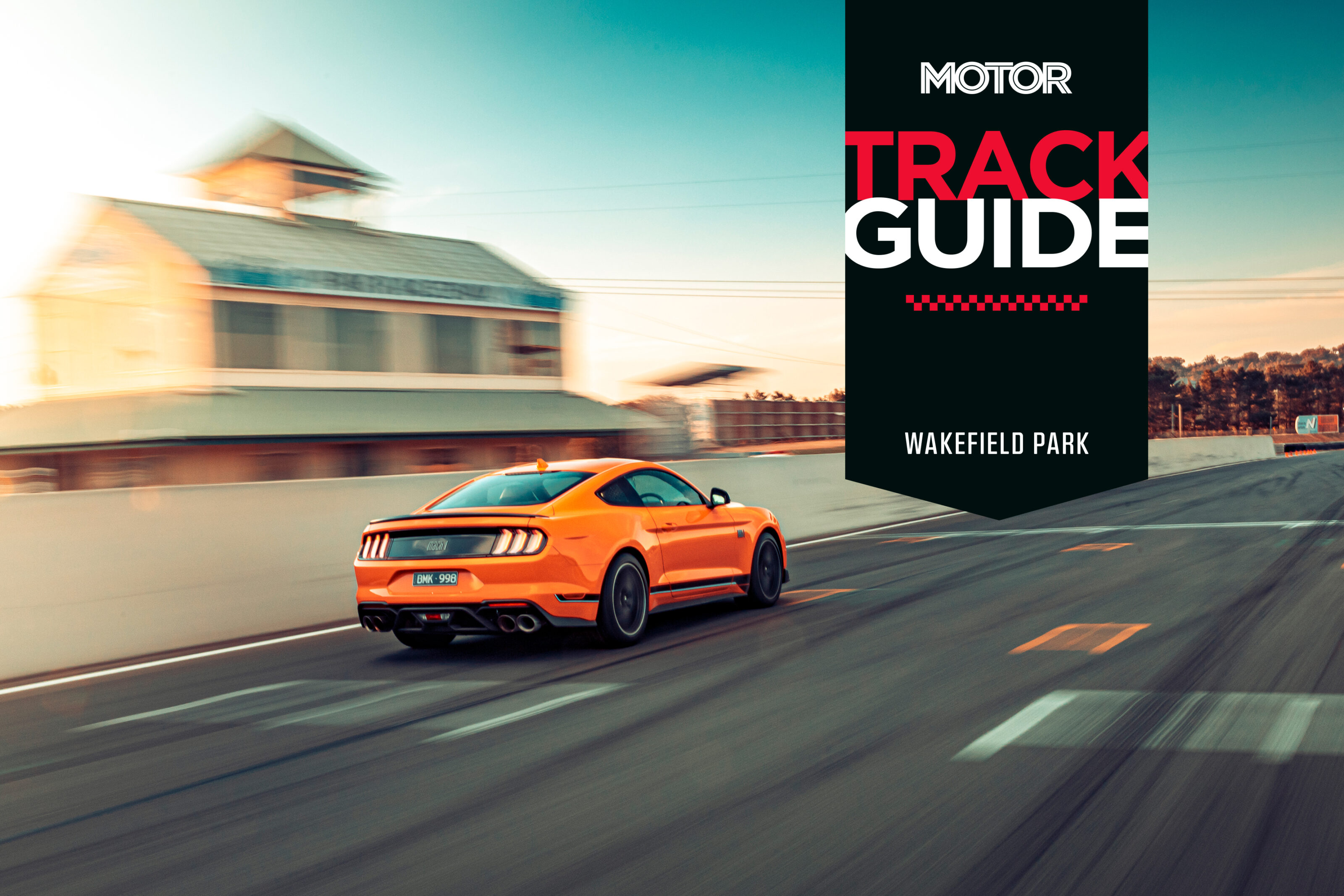Wakefield Park Raceway was built by and for those like us – car people with a passion for driving. So when Paul Samuels and John Carter saw the impact of urban sprawl on race tracks like Sydney’s Amaroo and Oran Park, it shifted them into action. They wanted to safeguard the ability to drive on a track, without necessarily racing, and built a facility that focused on club-level motorsport.
That location is just outside the NSW regional town of Goulburn. The 2.2km layout was built in 1994 and opened by Sir Jack Brabham that year. The topography is without trees or natural obstacles, meaning safety and runoff is rarely if ever an issue. In 2000 the ownership changed, while the circuit also received some re-profiling at the Fish Hook and Turn 10. National level racing appeared that year, including the Supercars development series.
The Benalla Auto Club, which also owns and runs Winton Raceway, purchased Wakefield Park in 2007 and resurfaced the track. The venue is used extensively for driver training, club track days and manufacturer events. MOTOR has also conducted PCOTY at the venue, something Warren Luff knows all about.
“It’s a great little circuit. I’ve seen it grow and evolve over the years. I hope it’s there for many years to come as it brings a lot to the Goulburn community,” he says. And in doing so, Wakefield Park is achieving what Samuels and Carter set out to do by providing a place for enthusiasts to hone their skills. With the help of Luffy, here’s MOTOR’s guide to one of Australia’s best track-day circuits.
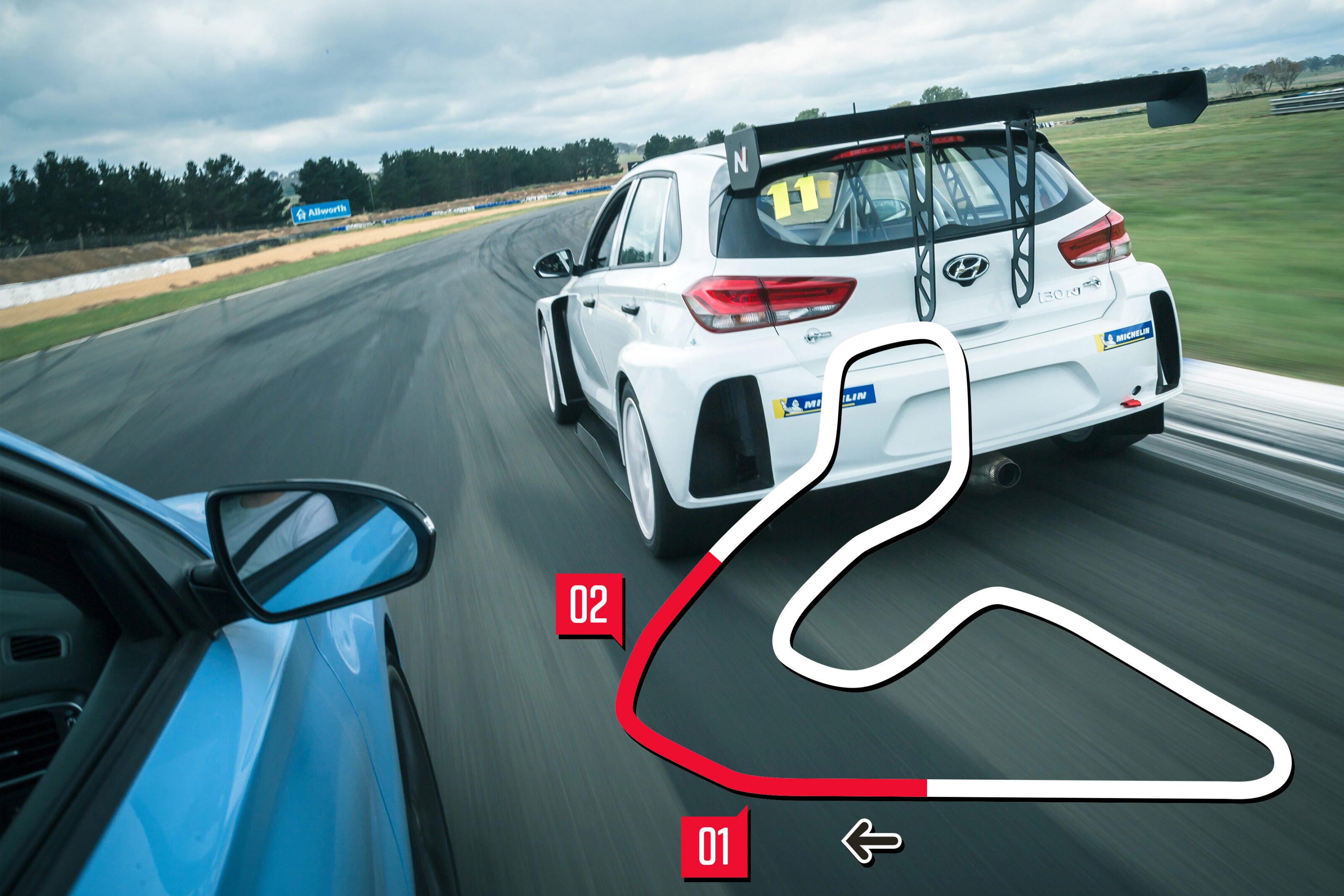
Section One: Getting Kinky
Turn One
The big thing to note is that you can generally get through Turn One faster than that which Turn Two will allow. Therefore, the speed you carry through that first kink ultimately determines your line and braking, and subsequently the speed you carry through Turn Two. If you overcommit through One, it’s very easy to lose serious time through Two and up the hill to Turn Three.
Turn Two
However, the critical corner is still Turn Two. You have to get your braking done in a straight line to settle the car and get a good run through and out of the corner in order to maximise your momentum up the hill. So the kink is a set-up corner for Two. Most cars can generally remain flat to the apex, but it really does depend on what you’re driving. It’s critical that you don’t let ego get in the way by trying to see how fast you can get through Turn One and then completely stuff up Turn Two.
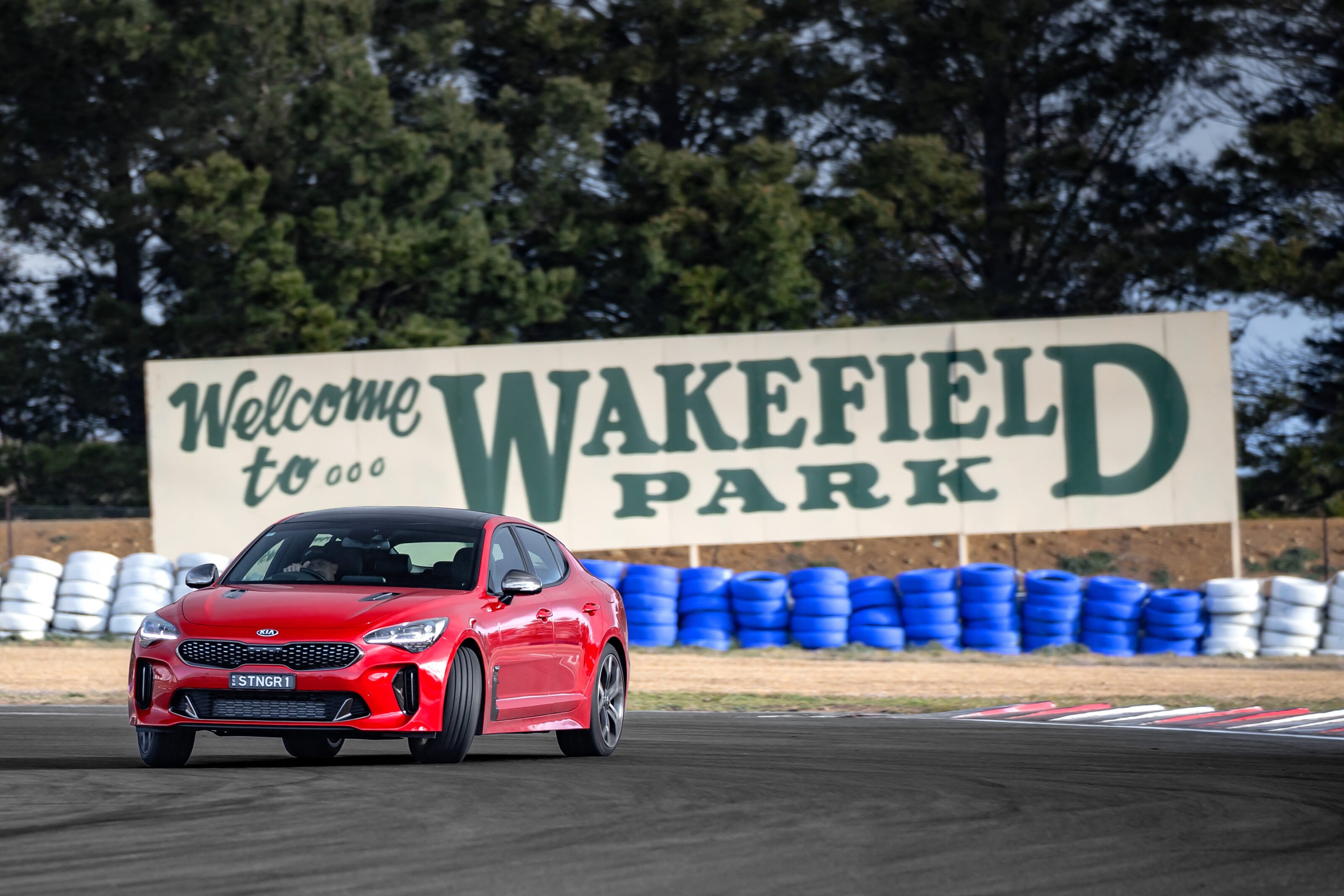
MOTOR Tip
There is more to be gained by taking a cautious approach to Turn One and getting Two right than barrelling in too hot and overshooting. A lot of time can be gained or lost. Like many sections it makes you think about your craft and to be more aware of how your inputs in one corner impact others.
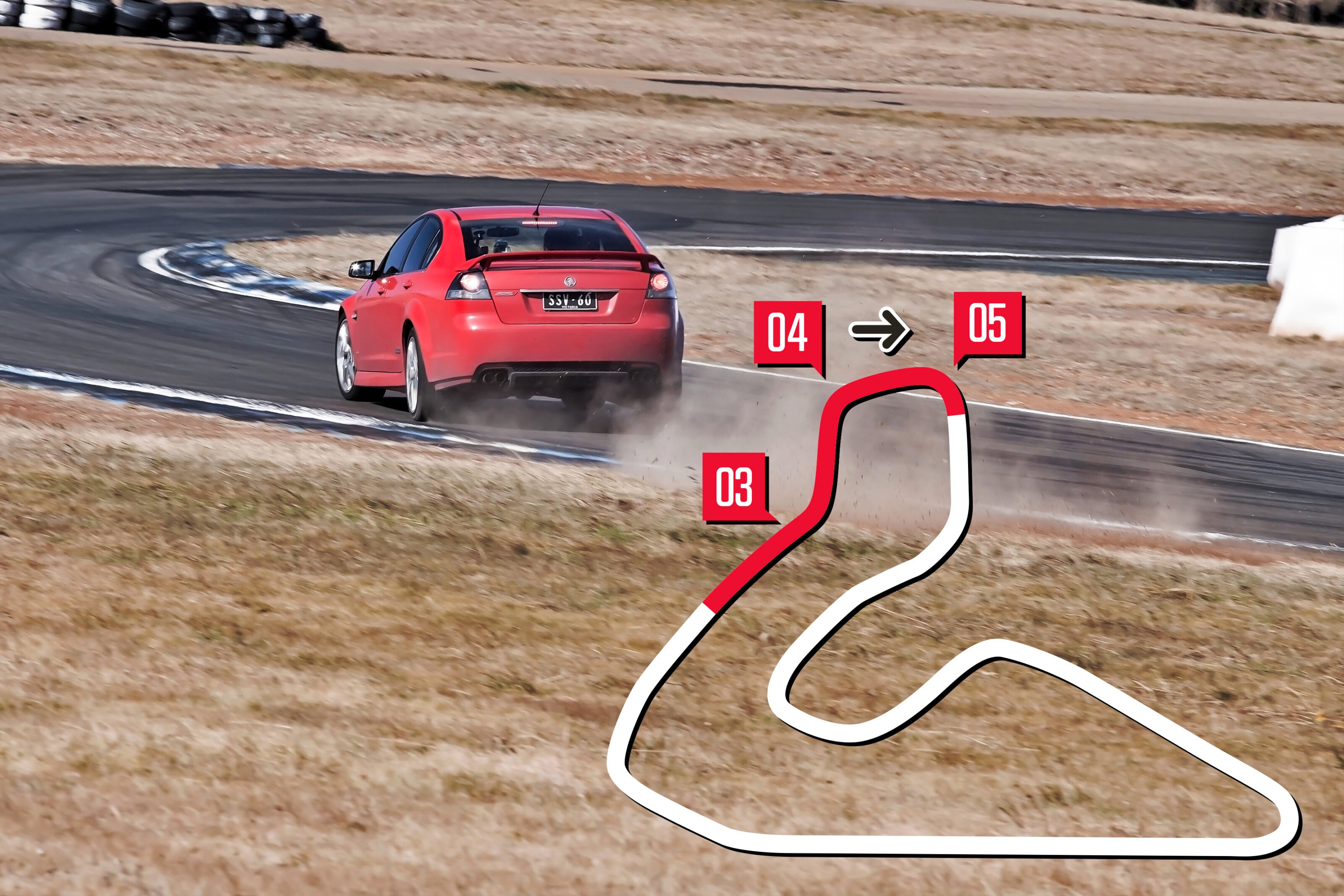
Section Two: Over the Top
Turns Three and Four
Turn Three is a fast, unassuming bend that requires the same approach as Turn One. That’s because the line you take through Three affects the line you’ll use through Four. For instance, you can blast through Three and think you’re a hero, but you’ll end up too far to the right and negatively impact Turn Four, which has the flow-on of hampering Five and the run down the hill.
Turn Three is all about compromise. You need to try and keep the car as much to the left on exit as possible without losing momentum. Then carry as much speed as possible through Four while positioning yourself up nice and high for Five. Turn Four is cambered because it’s on the hill – it’s not deliberately made that way, it’s merely following the shape of the earth.
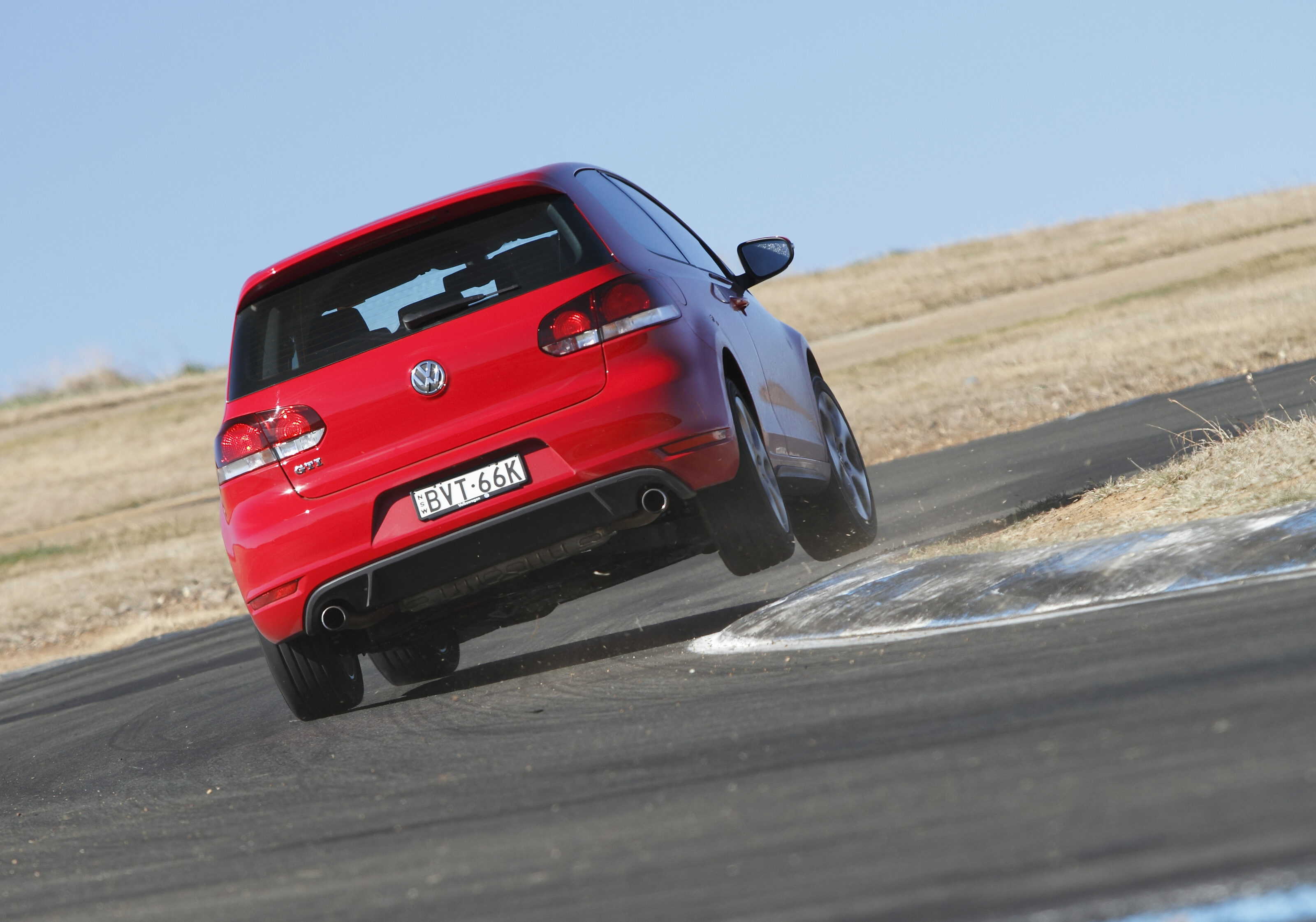
Turn Five
Turn Five appears to be a relatively simple 90-degree corner, but your speed through Six and Seven towards The Fish Hook is all determined here. It’s a critical corner to get right. It’s very easy to rush this corner and end up with a lot of mid-to-exit understeer.
MOTOR Tip
Because of the gradient, you can use the incline to do some of the braking for you through turns Three and Four. Effectively, you’re pushing the nose of the car into the hill. It’s deceptive because you can carry more speed through Turn Three than your mind believes, but remember to keep it within reason as to not affect the next few corners.
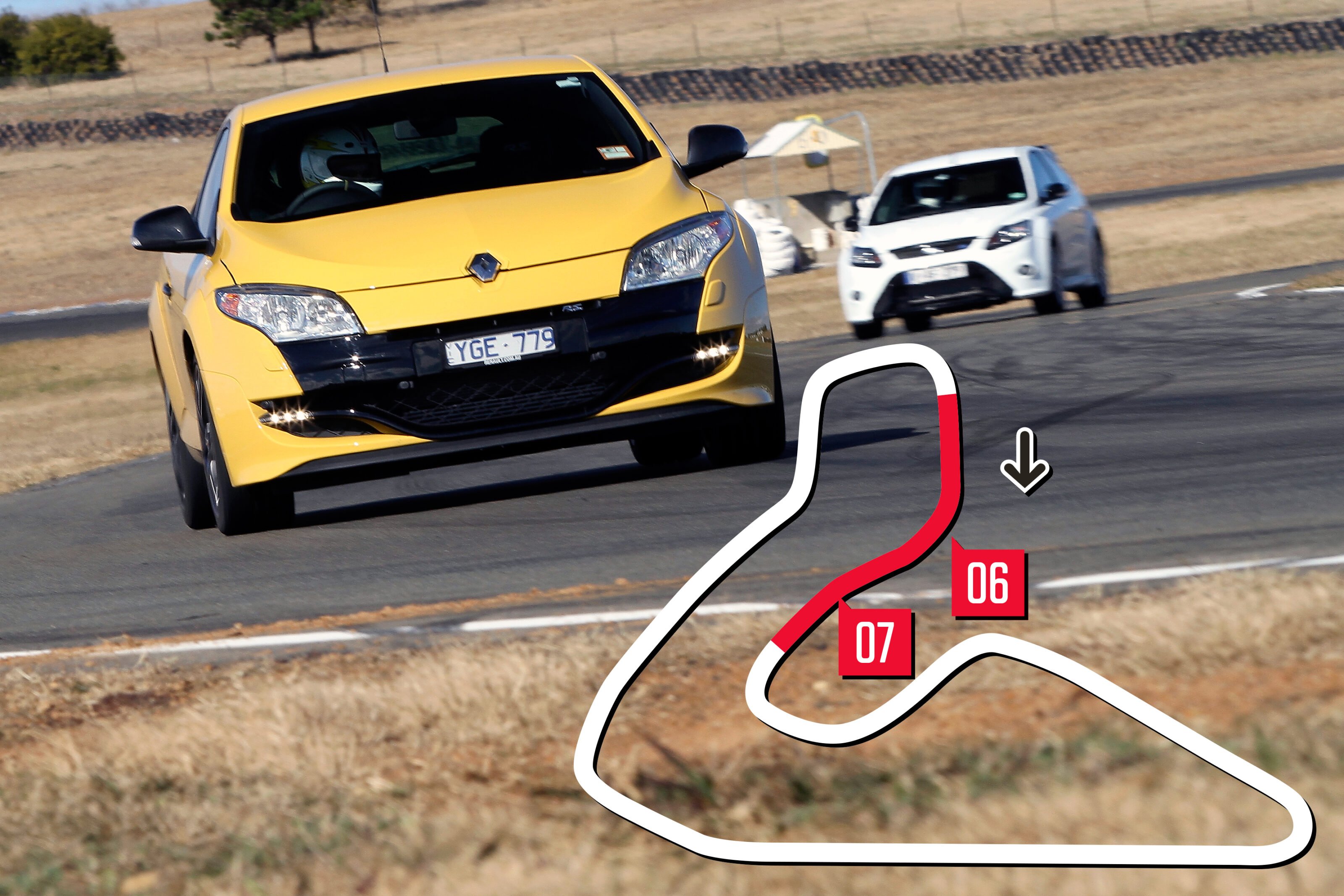
Section Three: Down the Hill
Turn Six
This is a really fun part of Wakefield Park. Generally, in most cars, Turn Six is only a small lift just to get the front axle dialled in while using as much of the inside kerb as possible to try and maintain as much pace as you can. Essentially, you’re trying to increase the width of the circuit so the more kerb you can use, the more speed you’ll carry.
Turn Seven
Turn Seven is more about setting the car up and braking on corner exit into Turn Eight. Because the track is continually curving to the left as you come through Seven, you need to try and square the car up as much as possible and brake diagonally towards the outside of Turn Eight as your entry point so the car can brake in a straight line.
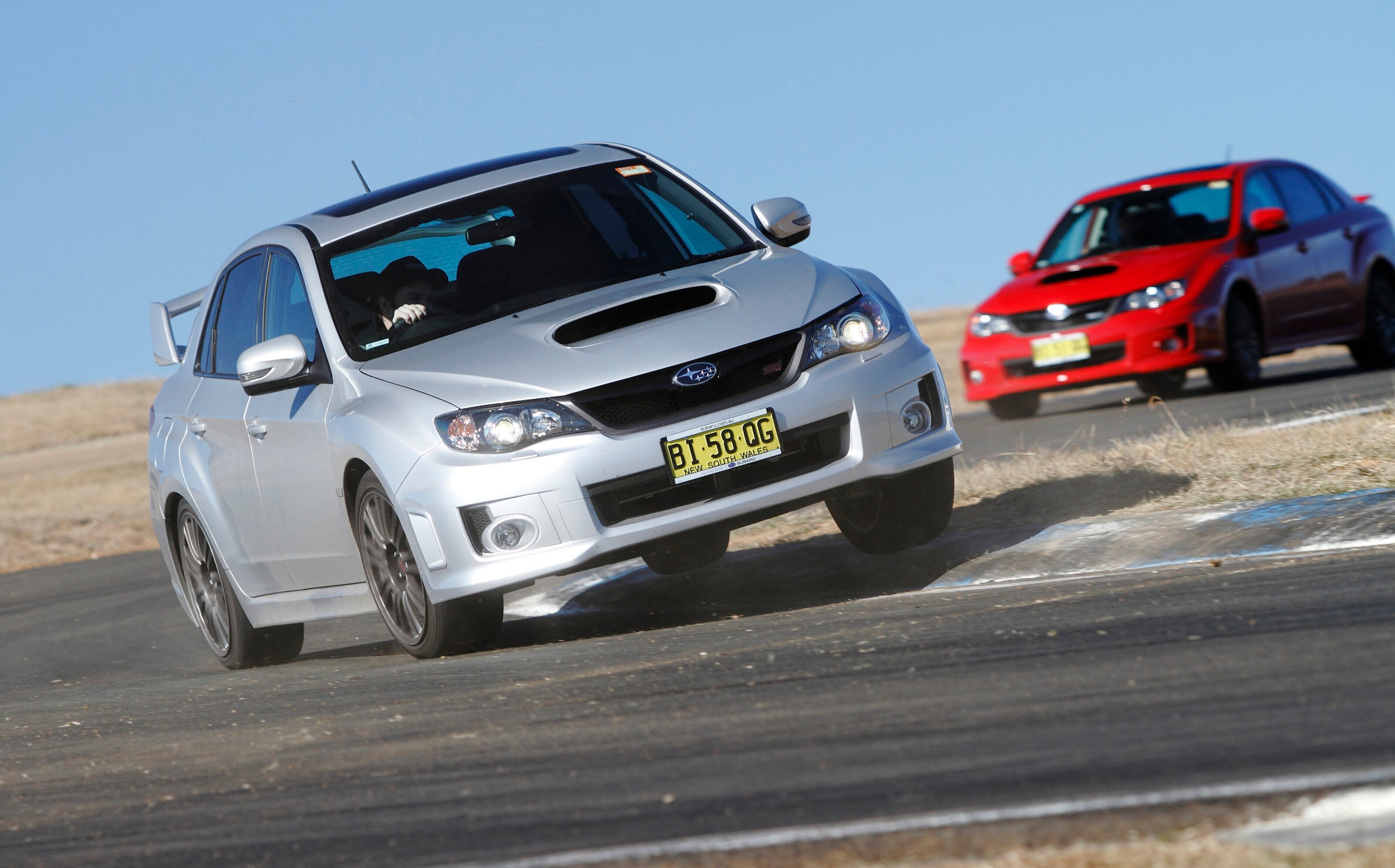
Even in a car with ABS, despite the fact you won’t lock an inside front, if you don’t have equal pressure over the front wheels the system isn’t going to be as effective as it can be. Your braking into Turn Eight is all determined by the line you take through Seven so you can get the car settled under brakes.
MOTOR Tip
In any type of car that doesn’t have a lot of power, carrying corner speed and keeping the car flowing is important to maintaining positive momentum. It’s a critical aspect to the lap time and a lesson Wakefield Park definitely teaches you.
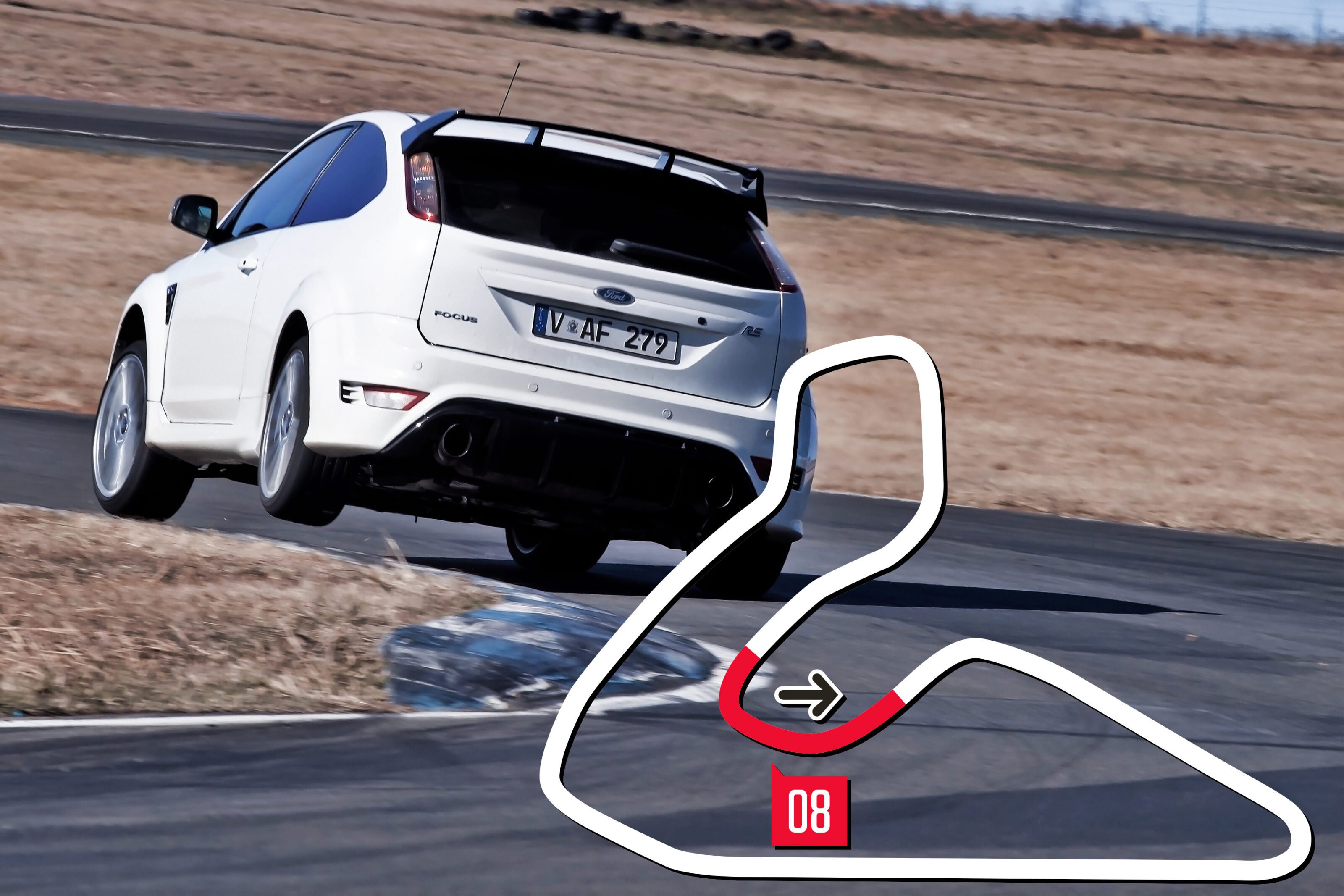
Section Four: The Fish Hook
Turn Eight
Over the years the profile of Turn Eight has changed. It’s a very easy corner to out-brake yourself after carrying too much speed down the hill through Six and Seven. As I noted earlier, braking into Turn Eight can be very easily compromised by line, but also by clearing the pedal too early and not slowing down enough.
If you look at the outside of the track there’s no grass for about 10 metres from the edge of the circuit. That’s because so many people understeer wide and fire off the track. So you need to get the car slowed enough so you’ve got some point on the front axle.
You want to be quite aggressive with the steering and really make the car go where you want it to. That’s because pretty much any type of driveline layout will generate mid-to-exit understeer here given that past the apex point it’s all about getting the power down as you head up to Turn Nine.
MOTOR Tip
Wakefield Park is far more technical than it seems on a track map. It’s a circuit that punishes mistakes because of the flow-on effect through the subsequent corners. Using GPS data offers an insight on turn combos, clueing you in on where you need to compromise speed on initial corner entry.
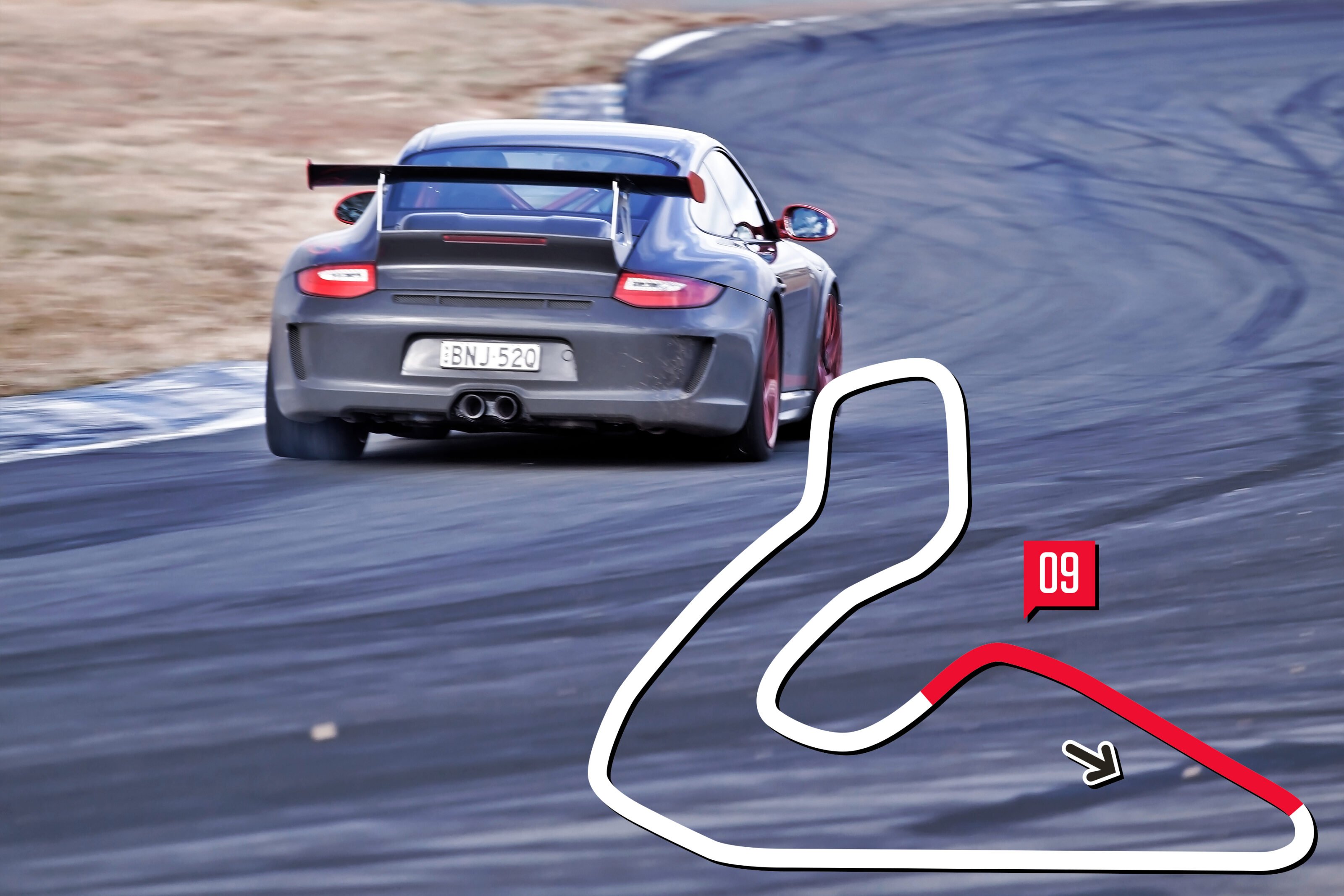
Section Five: Fast Right
Turn Nine
It’s a slight rise on the entry to Turn Nine, but it is a very fast-flowing corner. In a racing environment it’s crucial to get right in terms of setting up for an overtaking on the run into 10. In most road cars Turn Nine is just a lift to get enough weight back on the nose and aid turn-in. In something more serious a light touch of the brake is required, but it’s only a very, very light touch. Trying not to over-slow the car is important.
Be careful of how much inside kerb you use as it can upset the balance of the car coming out of the corner. It’s a relatively fast bend and sometimes if you use too much of the inside kerb (again, it depends on the car you’re driving) it can then make you late getting back on the throttle. That in turn means you’ll be slow on the run down to Turn 10.
MOTOR Tip
You don’t need a car with a lot of grunt. A little hot hatch is a lot of fun around Wakefield Park. However, of course, it’s a riot in a high-horsepower, rear-wheel drive car, too. More than anything, it’s more about the driver. A good driver can make just about any car look good here, but a bad driver can very much make any car look bad.
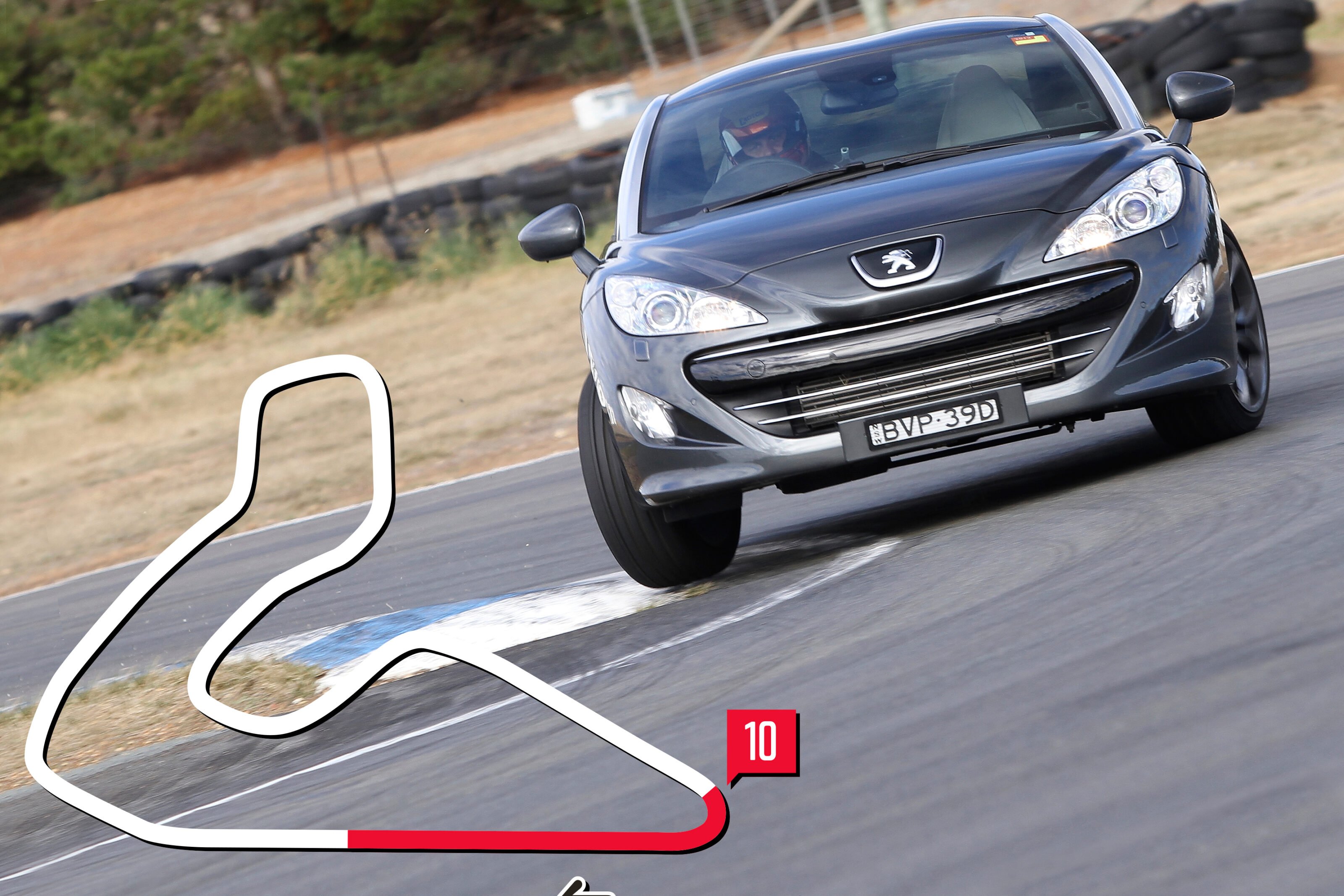
Section Six: The Final Hairpin
Turn Ten
Turn 10 is similar to Turn Eight in that it’s very easy to misjudge your braking. About 70 per cent of the time you’re slowing the car it’s relatively flat, but that last 30 per cent to the apex is downhill – it actually drops away a fair bit. Therefore it’s easy to rush the apex, or miss it altogether if you don’t arrest the pace enough. This is where nearly all cars will understeer without the right set up for the corner.
You really have to focus on braking the car as hard and long as possible while you’re in a straight line before trailing the pedal to the apex. Conversely, Turn 10 is also a much tighter corner than its given credit, so again running wide is very easy to do. It’s such a simple corner to miss the apex by half a metre to a metre if you don’t slow the car enough in a straight line.
Your terminal speed down the front straight is determined by your exit. Any mistake that you make at Turn 10 not only affects that lap, but it also affects the start of the following lap as well.
MOTOR Tip
A common mistake at Wakefield is rushing the apex at Turn Two, Eight and 10. Spend time finessing how you drive through and out of the corner, but especially monitor your approach over almost anything. They’re all high speed entries and people either leave the braking too late or don’t brake hard enough.
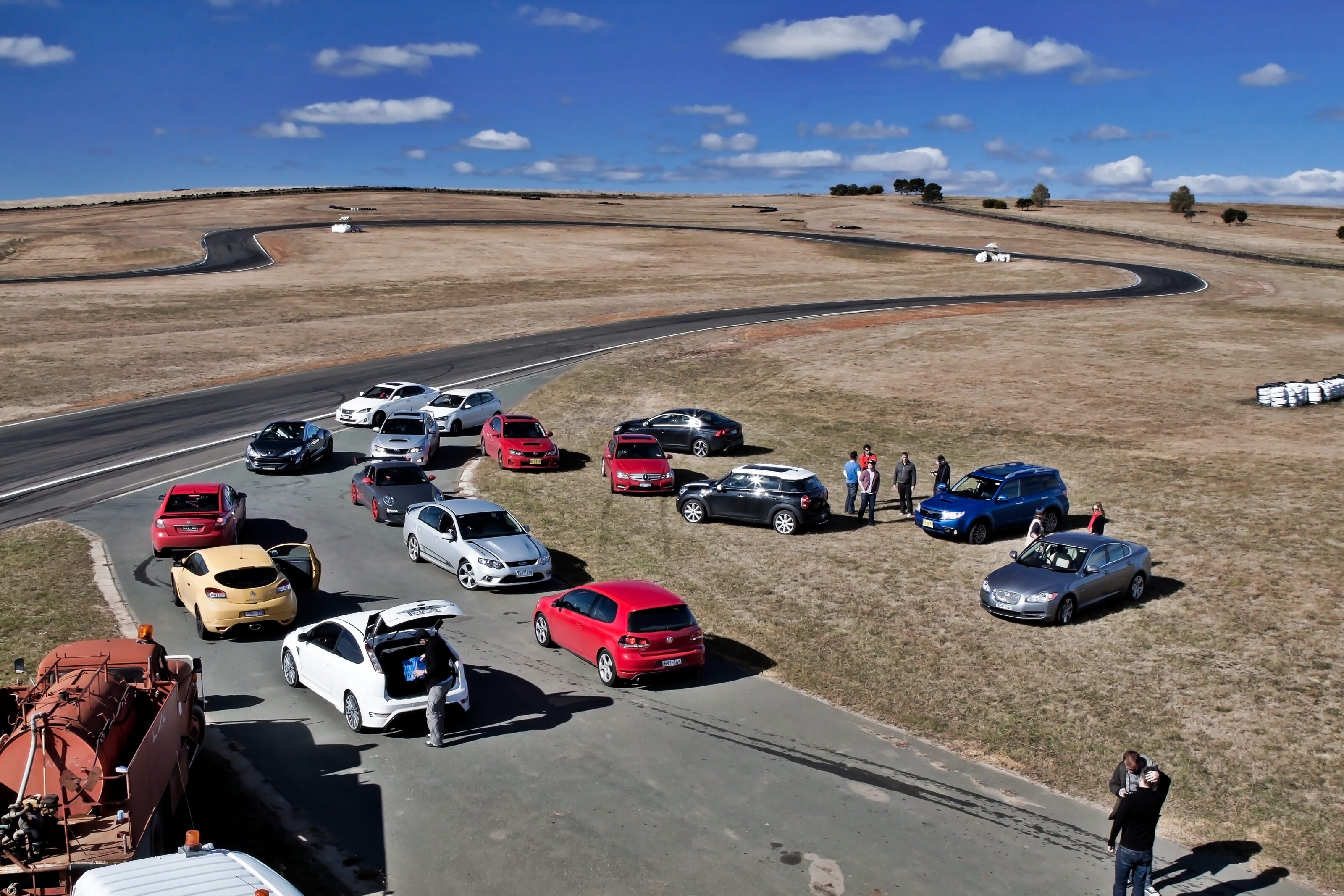
Wakefield is a Mecca for club-level motorsport
Ideal for those who want to hone skills and improve against the stopwatch
When branding a circuit the “nation’s spectator track”, the venue had better live up to slogan. Given the fact you can see the entire 2.2km layout clearly from most spectator areas, we reckon it’s warranted. And with loads of natural elevation and tricky, technical sections around Wakefield Park Raceway, it’s worth watching.
While the original idea was to hold events like driver training and general track days, this is a great place to watch racing. The Shannons Nationals (with categories like TCR) hold rounds here, as well as club sprints, state championship events, time attack and Superbikes.
As a guide, anything less than a minute is seriously quick (we’re talking proper race cars), while a production car on good rubber should aim for the 1min 10sec mark.
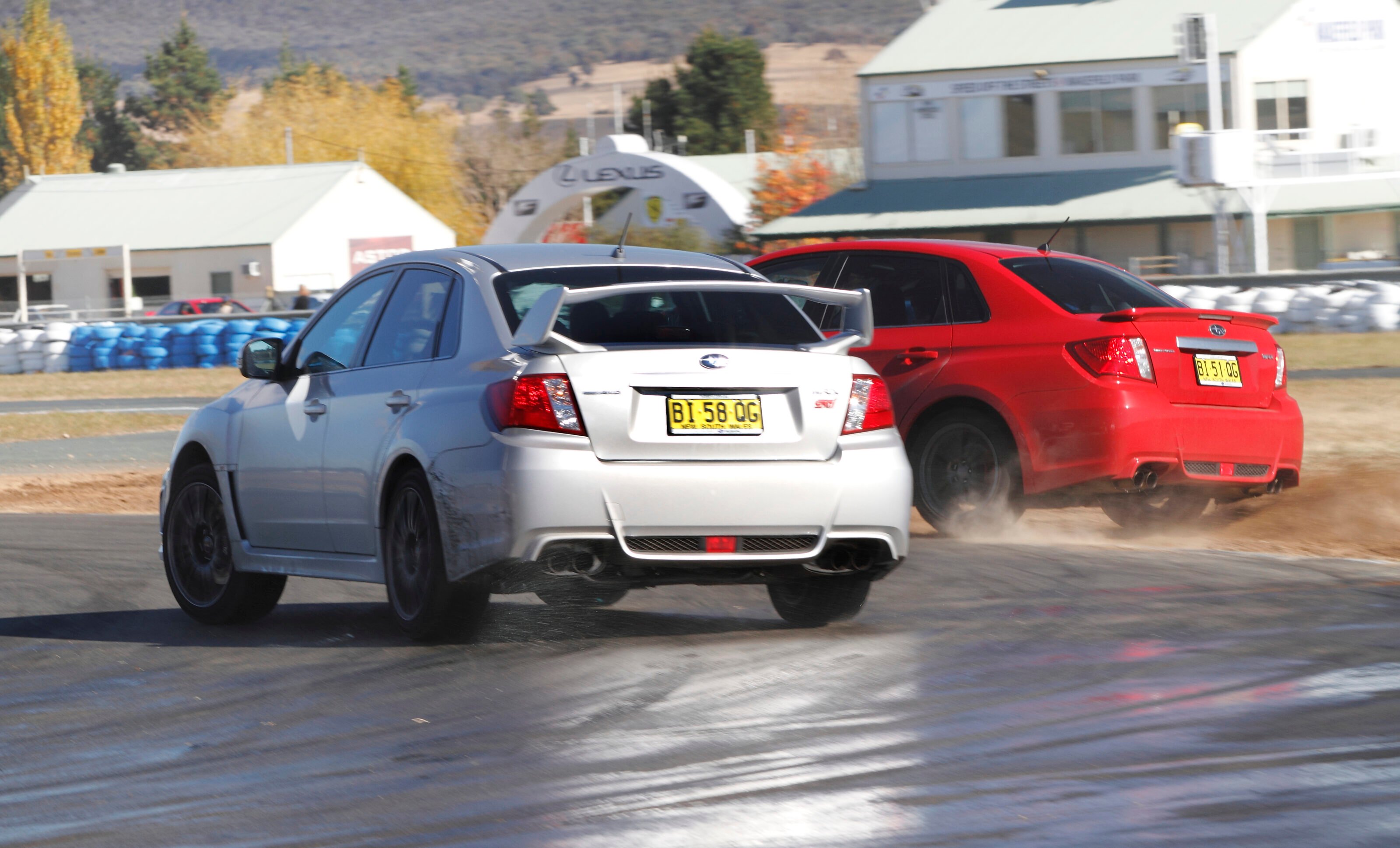
Wakefield is also extensively used for motorcycles and offers specific challenges for bikers.
Those making the trek from Sydney will need to allow more than a few hours to drive (or trailer) down the Hume Highway, while Canberrans cut that commute to about an hour. Accommodation shouldn’t be an issue with the Goulburn township only 12km away. If that’s too far away, Wakefield Park Raceway offers five on-site cabins, each equipped with six bedrooms. It’ll cost you $75 for a room for the night, or $450 for the entire cabin.
If you can’t make it in person, the virtual world offers options, too, with Assetto Corsa delivering the rural NSW track to your living room. Either way, Wakefield Park is a great facility to experience.
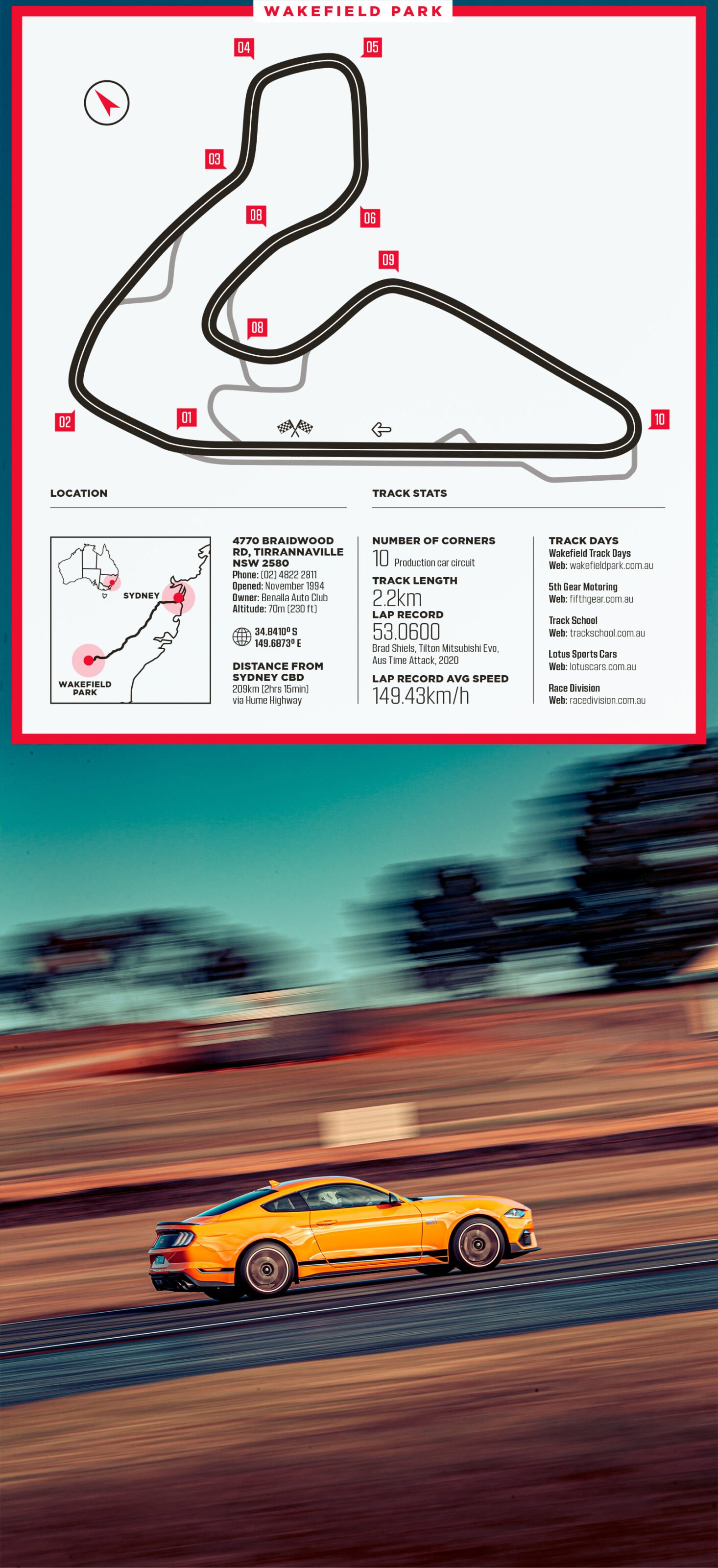
We recommend
-
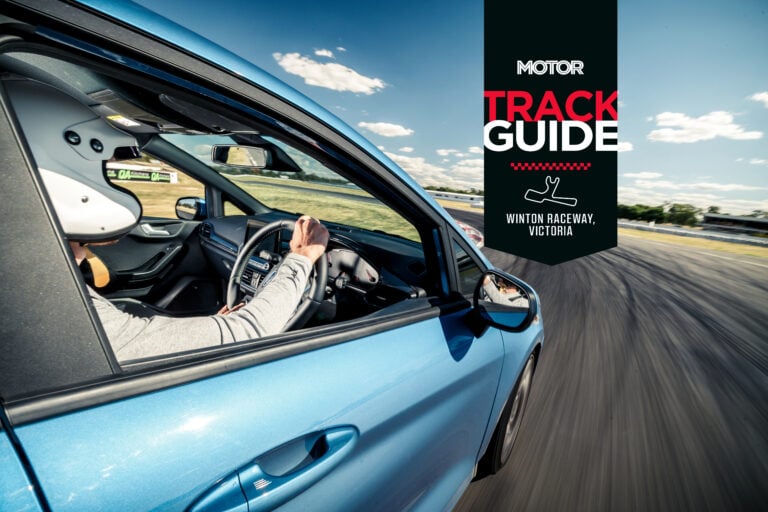 Features
FeaturesMOTOR Track Guide: Winton Raceway
Everything you need to know about mastering one of Australia’s most popular racetracks
-
 Features
FeaturesMOTOR Track Guide: The Bend Motorsport Park’s International Circuit
Everything you need to know about mastering Australia’s newest purpose-built race track
-
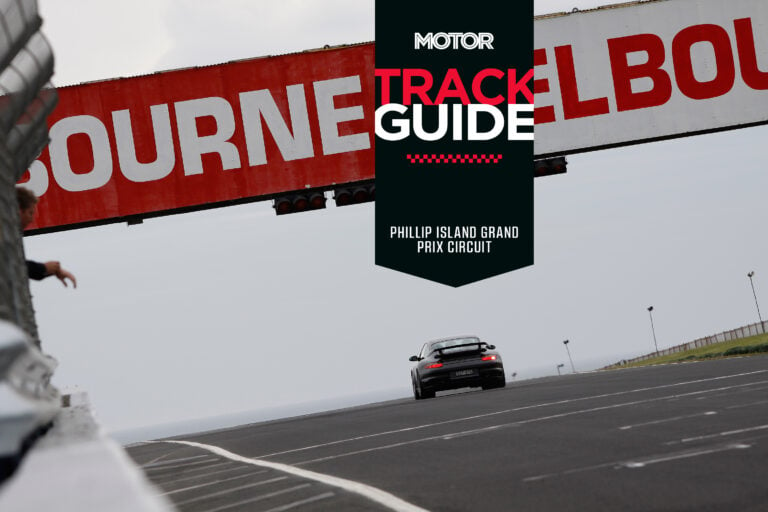 Features
FeaturesMOTOR Track Guide: Phillip Island Grand Prix Circuit
Everything you need to know about one of Australia’s most iconic race tracks

